Gift Books that Contain Larger Worlds
If you think about how big the world is, it’s pretty amazing that authors manage to put it into such small containers like books. It’s no wonder that some books have to be a little bigger to contain the big subjects they hold. These six gift books reviewed in our July/August issue capture large worlds between their pages.
Ralph Fasanella
Images of Optimism
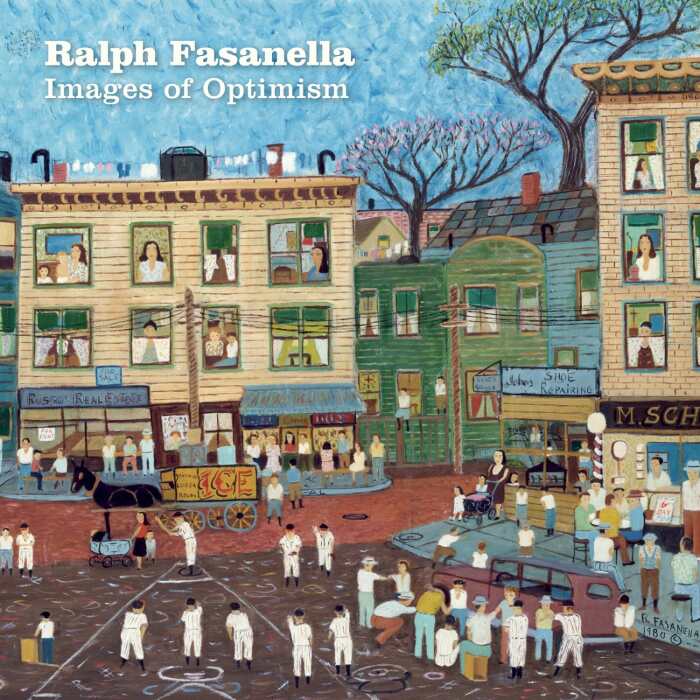
Leslie Umberger
Mark Fasanella
Ralph Fasanella, illustrator
Pomegranate
Hardcover $35.00 (128pp)
978-0-7649-7950-7
Buy: Amazon
Facing a blank canvas, most artists strive to paint a pretty picture under the guidelines (however loose) of Impressionism, Expressionism, or some other style or technique, while a rarer few seek to use their paintings to address political or social injustices, either symbolically or overtly. With the primitive, self-taught style of Grandma Moses in mind, take note of Ralph Fasanella’s early- mid-twentieth century work depicting gritty, urban New York City. A fierce advocate for strong unions and labor rights among the immigrant population, Fasanella started painting shortly after World War Two and quickly earned critical acclaim as a “modern primitive,” an artist adept at capturing a “unique and quintessentially American spirit while simultaneously offering an antidote to the elite art world embodied in the work of the abstract expressionists,” according to art historian Leslie Umberger in Ralph Fasanella: Images of Optimism. Interestingly, Fasanella’s lack of formal art training did not keep him from intensely studying the greats via books, galleries, and museums. Throughout his life, he was comfortable in art circles. Blacklisted for his leftist activism during the early Cold War years, his work never backed away from the political issues of the day.
MATT SUTHERLAND (July 20, 2017)
Canada’s Dream Shall Be of Them
Canadian Epitaphs of the Great War
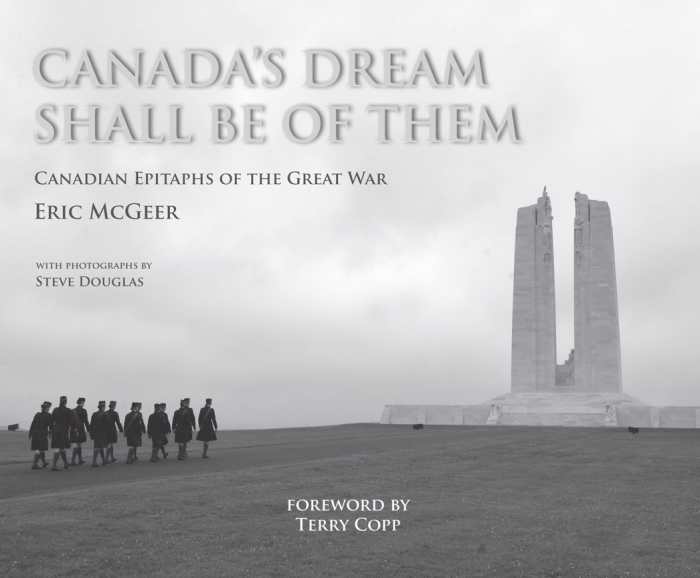
Eric McGeer
Steve Douglas, photographer
Wilfrid Laurier University Press
Hardcover $49.99 (223pp)
978-1-77112-310-5
Buy: Local Bookstore (Bookshop), Amazon
War memorials—it doesn’t get any gloomier, but also awe-inspiring as the male mind seeks to comprehend the horror of battle, from a but-for-the-grace-of-God vantage point. World War One took the lives of 66,000 Canadians and maimed another 170,000, in the service of fighting for the Commonwealth. Along the former Western Front, some 40,000 Canadian tombstones cluster in British cemeteries. Of that number, approximately 3,000 contain personal inscriptions written by family members in a program created by the Imperial War Graves Commission. This heartbreakingly beautiful project presents 1,000 or so examples of those personalized epitaphs, along with compelling history and insight into Canada’s conflicted memory of the Great War.
DEATH IS NOT A BARRIER TO LOVE, DADDY. KAYE
Private Peter William Lapointe MN, 2nd Battalion, August 17th 1918 (age 34)
EQUALLY READY AT THE CALL OF COUNTRY AND AT THE CALL OF GOD.
Private James Campbell Currie, 102nd Battalion, April 9th 1917 (age 27)
MATT SUTHERLAND (July 20, 2017)
Pie & Whiskey
Writers under the Influence of Butter & Booze
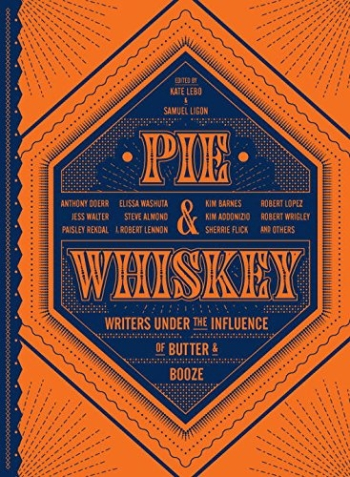
Kate Lebo, editor
Samuel Ligon, editor
Sasquatch Books
Hardcover $19.09 (272pp)
978-1-63217-112-2
Buy: Local Bookstore (Bookshop), Amazon
In vino veritas, in whiskey wit, in pie pleasure.
With that Latin-inspired preamble, we are called West to an all-American literary event held annually in Spokane and Missoula named Pie & Whiskey. And yes, pie and whiskey are served while seriously talented writers read their new works loosely based on, yes again, pie and whiskey. What’s not to like, unless the booze runs out, which happened six years ago during the inaugural event when more than three hundred people showed up at the Spokane Woman’s Club with seating for fifty.
Most of the forty pieces collected in this delightful book were written to be performed live and chapter ends come replete with recipes. In their introduction, the organizers/editors, Kate Lebo and Sam Ligon, write: “By serving up great writing and sugary, boozy treats, we create a social space where the audience engages in a kind of conspiracy with the writers, the writers are also audience members, and the writers and the audience feed off each other, all of us eating homemade pie and drinking good, local whiskey, with no kids in the place.”
MATT SUTHERLAND (July 20, 2017)
Legends Never Die
Athletes and their Afterlives in Modern America

Richard Ian Kimball
Syracuse University Press
Hardcover $55.00 (216pp)
978-0-8156-3506-2
Buy: Local Bookstore (Bookshop), Amazon
Against all the laws of nature, certain sports heroes pull off the extraordinary stunt of running faster, jumping higher, hitting a ball farther after they die. In a word, athletes—think George Gipp (the Gipper), Lou Gehrig, Dale Earnhardt—achieve immortality, the same elusive stuff Achilles sought on the battlefields of Troy. How and why the immortalization process happens—media coverage, Hollywood, family activism—is the question this captivating project answers. Richard Ian Kimball spotlights Joe DiMaggio, Bonnie McCarroll, Benny Paret, Mickey Mantle, Ted Williams, and many other notables, all to uncover the mythmaking behind the legend.
John Updike built up Willams’s immortality bonafides in a famous essay after the retiring slugger hit a home run in his last at bat and refused to come out of the dugout to tip his cap. “Our \[fan\] noise for some seconds passed beyond excitement into a kind of immense open anguish, a wailing, a cry to be saved. But immortality is nontransferable. The papers said that the other players, and even the umpires on the field, begged him to come out an acknowledge us in some way, but he never had and did not now. Gods do not answer letters.”
MATT SUTHERLAND (July 20, 2017)
The Vél d’Hiv Raid
The French Police at the Service of the Gestapo
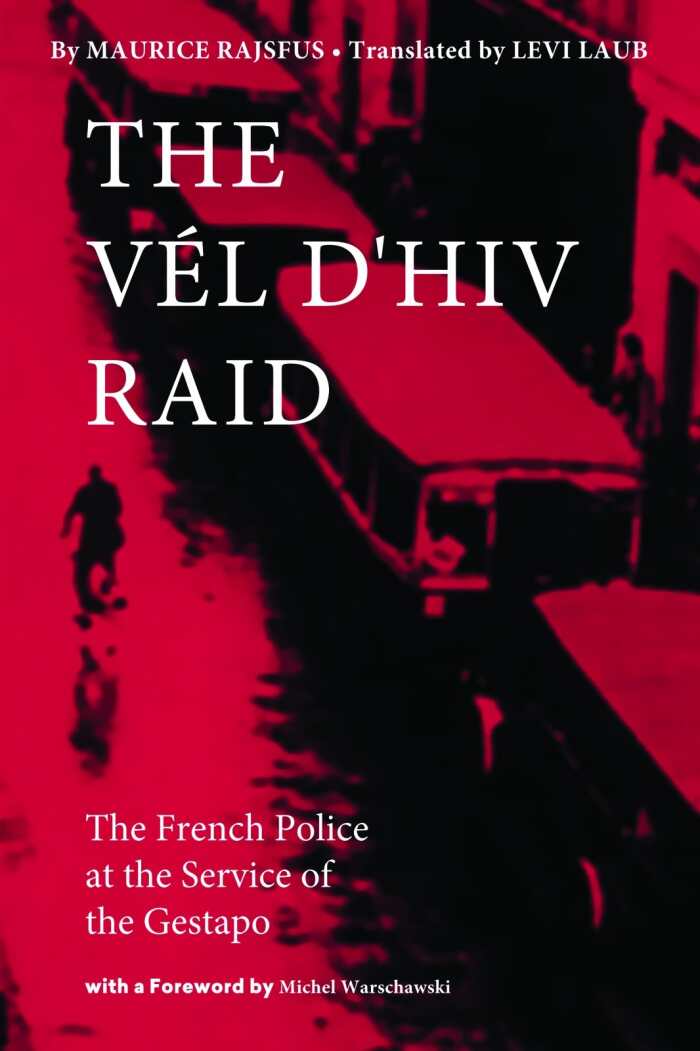
Maurice Rajsfus
Levi Laub, translator
DoppelHouse Press
Hardcover $18.95 (112pp)
978-0-9978184-5-1
Buy: Local Bookstore (Bookshop), Amazon
Rare and invaluable is the writer who can address a topic that can’t possibly withstand further scrutiny—oh please, not again—only to produce a brilliantly original, insight-filled manifesto. Maurice Rajsfus pulls off that exact feat of magic in The Vel d’Hiv Raid: The French Police at the Service of the Gestapo. That the French lustily collaborated with the Nazis during WWII, we know from scores of trustworthy sources, but Rajsfus helps us see the implications of the othering of whole communities based on their ethnic, national, or religious origins, as we’re seeing with President Trump’s flippant rhetoric and certain autocratic European leaders. Herein, Rajsfus meticulously documents the July 1942 roundup of 13,152 French citizens by French police and their eventual one-way train journey to death camps in Eastern Europe. Need we mention the Jewish heritage of those French citizens?
A survivor of the Vel d’Hiv raid, Rajsfus is also the author of Operation Yellow Star and Black Thursday, both of which offer more evidence about France’s WWII complicity with the Nazis.
MATT SUTHERLAND (July 20, 2017)
The Hope of Another Spring
Takuichi Fujii, Artist and Wartime Witness
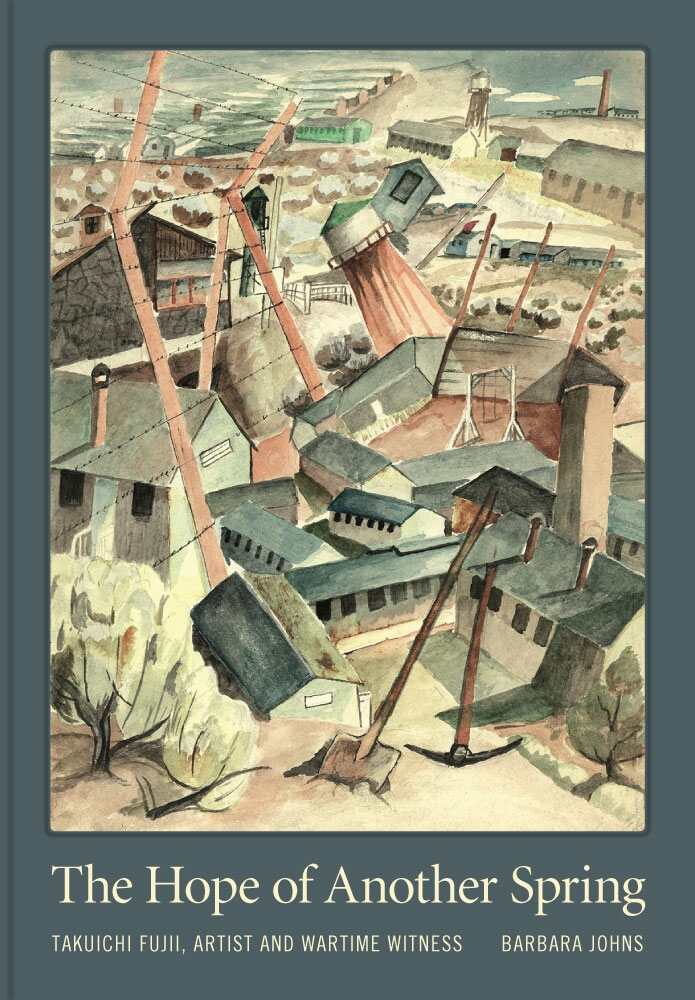
Barbara Johns
University of Washington Press
Hardcover $39.95 (352pp)
978-0-295-99999-9
Buy: Local Bookstore (Bookshop), Amazon
What is American history other than a record of stuff that happened somehow related to the people and places of this country. Everything in the past is history, and no matter how insignificant, it factors into the character and identity of this young buck of a country. There is much to be proud of, to be sure, but recognizing the unflattering and shameful is how we become better as a people and not doomed to repeat the act. America made one such blunder when it ingloriously knocked on the door of a young American living with his wife and daughters in Seattle in the early 1940s and incarcerated the family along with 100,000 other Americans in remote Western detention camps. We know about Seattleite Takuichi Fujuii because he was an accomplished artist who decided to document his three years and five months imprisonment with 249 inked drawings to accompany his diary. The sketches and captions are often gut wrenching. Early in the internment, he writes: “Indeed, this is an odd door. The lock is on the outside. I see that this relocation center is a prison.” A once-in-a-lifetime work of history and art, Takuichi’s diary was translated by his grandson Sandy Kita.
MATT SUTHERLAND (July 20, 2017)
Matt Sutherland

